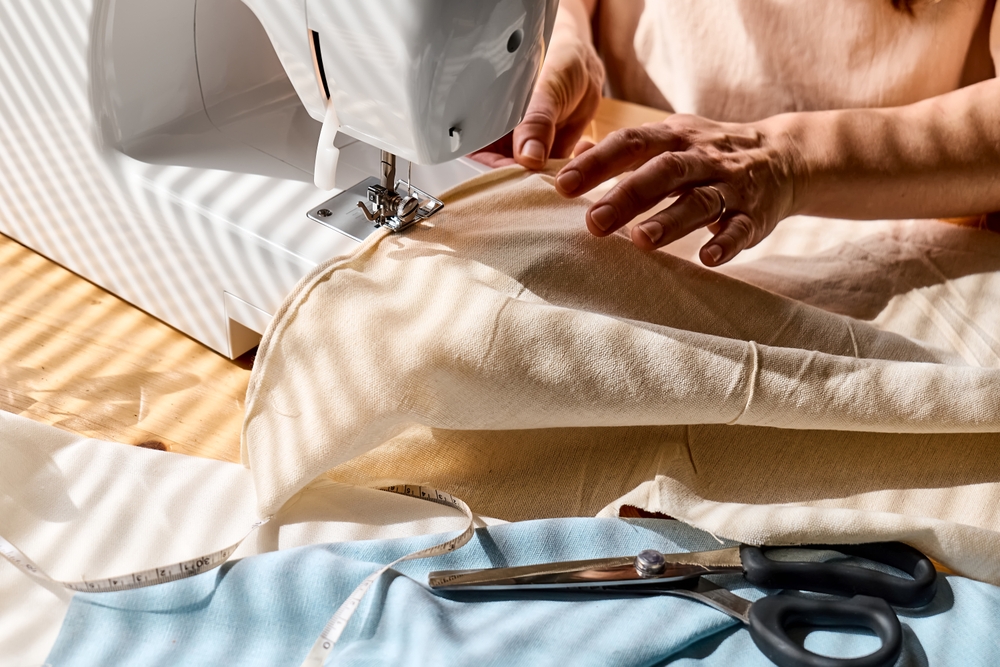Maximizing Wardrobe Potential: The Art of Clothing Modification
In the ever-evolving world of fashion, a new trend is taking hold that combines creativity, sustainability, and personal expression. Clothing modification, the practice of altering and customizing existing garments, is revolutionizing the way we approach our wardrobes. This innovative approach not only breathes new life into old favorites but also allows fashion enthusiasts to create truly unique pieces that reflect their individual style.

The Rise of DIY Fashion
The clothing modification trend has its roots in the DIY (Do-It-Yourself) movement, which has gained significant traction in recent years. With the rise of social media platforms like Pinterest and Instagram, fashion enthusiasts have been exposed to a wealth of inspiration and tutorials for transforming their wardrobes. This accessibility has democratized fashion, allowing individuals to take control of their style without relying solely on mass-produced garments.
The appeal of clothing modification lies in its ability to offer a personalized touch to one’s wardrobe. By altering existing pieces, fashionistas can create looks that are truly one-of-a-kind, reflecting their personality and style preferences. This level of customization is particularly attractive in an era where individuality is highly valued.
From Alteration to Transformation
Clothing modification encompasses a wide range of techniques, from simple alterations to complete garment overhauls. At its most basic level, it can involve hemming pants, taking in waistlines, or replacing buttons. However, more advanced modifications can include repurposing garments entirely – turning a dress into a top, for example, or combining multiple pieces to create something entirely new.
One popular technique is upcycling, which involves transforming discarded or unwanted clothing into new, higher-quality pieces. This not only reduces waste but also allows for the creation of unique, statement pieces that can’t be found in stores. Upcycling has gained particular traction among environmentally conscious consumers who are looking to reduce their fashion footprint.
The Intersection of Technology and Tradition
While clothing modification has its roots in traditional tailoring and sewing techniques, modern technology is playing an increasingly important role in this trend. 3D printing, for example, is being used to create custom embellishments and accessories that can be added to existing garments. Additionally, digital design tools are making it easier for amateur modifiers to plan and visualize their projects before picking up a needle and thread.
However, the resurgence of interest in traditional crafting techniques should not be overlooked. Many clothing modifiers are embracing age-old skills like embroidery, patchwork, and hand-dyeing to add unique touches to their garments. This blend of old and new techniques is creating a rich and diverse landscape within the clothing modification trend.
The Economic and Environmental Impact
The clothing modification trend is not just about style – it also has significant economic and environmental implications. By extending the life of existing garments, consumers can reduce their overall clothing expenditure and decrease their reliance on fast fashion. This shift towards a more sustainable approach to fashion consumption aligns with growing concerns about the environmental impact of the textile industry.
Moreover, the trend is creating new economic opportunities. Skilled tailors and seamstresses are finding increased demand for their services, while a new generation of designers is emerging, specializing in upcycled and modified clothing. This has led to the growth of small businesses and online marketplaces dedicated to custom and modified fashion.
The Future of Fashion: Personalization and Sustainability
As the clothing modification trend continues to gain momentum, it’s likely to have a lasting impact on the fashion industry as a whole. Brands are taking notice, with some offering customization services or selling garments specifically designed to be easily modified. This shift towards personalization and sustainability could reshape the way clothing is produced and consumed in the coming years.
The trend also speaks to a broader cultural shift towards mindful consumption and individual expression. As consumers become more conscious of their purchasing decisions and their environmental impact, clothing modification offers a way to stay fashionable while aligning with these values.
Insider Tips for Clothing Modification Success
-
Start small: Begin with simple alterations like hemming or button replacement before tackling more complex projects.
-
Invest in quality tools: A good sewing machine, sharp scissors, and high-quality thread can make a significant difference in your results.
-
Practice on old garments: Use pieces you no longer wear to experiment with new techniques without the pressure of ruining a favorite item.
-
Learn basic sewing skills: Understanding fundamental stitches and seam construction will give you a strong foundation for more advanced modifications.
-
Think outside the box: Don’t be afraid to combine different garments or completely reimagine a piece’s function.
-
Consider professional help: For complex alterations or valuable items, it may be worth consulting with a professional tailor.
-
Document your process: Take before and after photos to track your progress and inspire others in the modification community.
As we look to the future of fashion, clothing modification stands out as a trend with staying power. By empowering individuals to take control of their wardrobes, it offers a sustainable and creative approach to personal style. Whether you’re looking to revitalize old favorites or create something entirely new, the world of clothing modification invites you to reimagine your relationship with fashion and express your unique vision through the clothes you wear.





